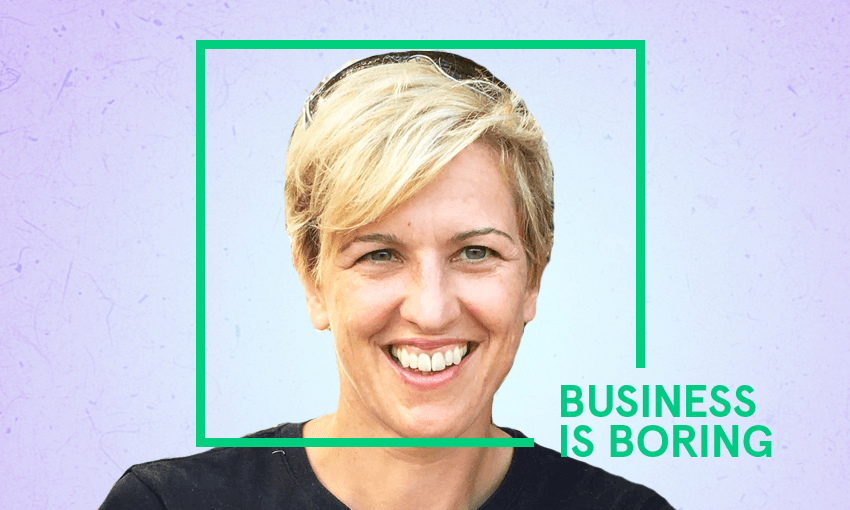Business is Boring is a weekly podcast series presented by The Spinoff in association with Callaghan Innovation. Host Simon Pound speaks with innovators and commentators focused on the future of New Zealand, with the interview available as both audio and a transcribed excerpt. This week he talks to Sandy Mamoli, author of Creating Great Teams.
Today’s guest is an author who’s literally written the book on creating great teams. She’s a regular keynote speaker and was an actual Olympian who’s now a leading expert in agile leadership and culture, and in helping teams adopt holacracy. We hear a lot about these terms and how they can help businesses improve, but what do they really mean? How can they actually help business and who’s using them? Well, we’re lucky today to be joined by Sandy Mamoli, from agile consultancy Nomad8, who’s worked with organisations all around the world, including local innovators TradeMe and Snapper to help people work better.
Either download this episode (right click and save), have a listen below or via Spotify, subscribe through iTunes (RSS feed) or read on for a transcribed excerpt.
Let’s dig into a little more of the technical side of things, because you’ve written this book, Creating Great Teams: How Self-Selection Lets People Excel, and that’s a really interesting subject. In the early days, it’s easy with a small team of people to communicate everything and to make it work, and then once you get projects there are ideal sizes of teams, but then you might have lots of people who want to do lots of different kinds of things and you have to tell people what to do.
Your book is really interesting because it talks about the self-selection of people being able to choose the projects that they work on, so what’s an ideal team size and [what happens when] people can choose whatever they want to do in a business?
We say the ideal team [size] is seven plus minus two people, and the reason the teams are relatively small is so that you can still talk to each other without having cliques or without having to write too much documentation. We’re basically trying to emulate that startup world in the olden days where it was just us in a little garage and we could all talk to each other.
We kind of figured out how those teams can work together and I know that’s really really hard but that’s a known problem. At some point, we realized that nobody had thought about the problem of how to actually get into those teams. It’s always been management selection where someone goes, ‘you, you and you should be in that team, you, you and you in that other team’.
At the time, me and my friend David Mole and I were at TradeMe and we had this problem that we had around 300 people we needed to get into teams. That’s when we realized: why are we actually telling other people which team to work with? Because people do the best work if they can choose what they work on and who they work with. So we came up with this method to make it safe for people to choose which team they wanted to work in. It’s worked really well at TradeMe and that’s five years ago. Since then we’ve shared how to do it and lots of companies have tried it too.


